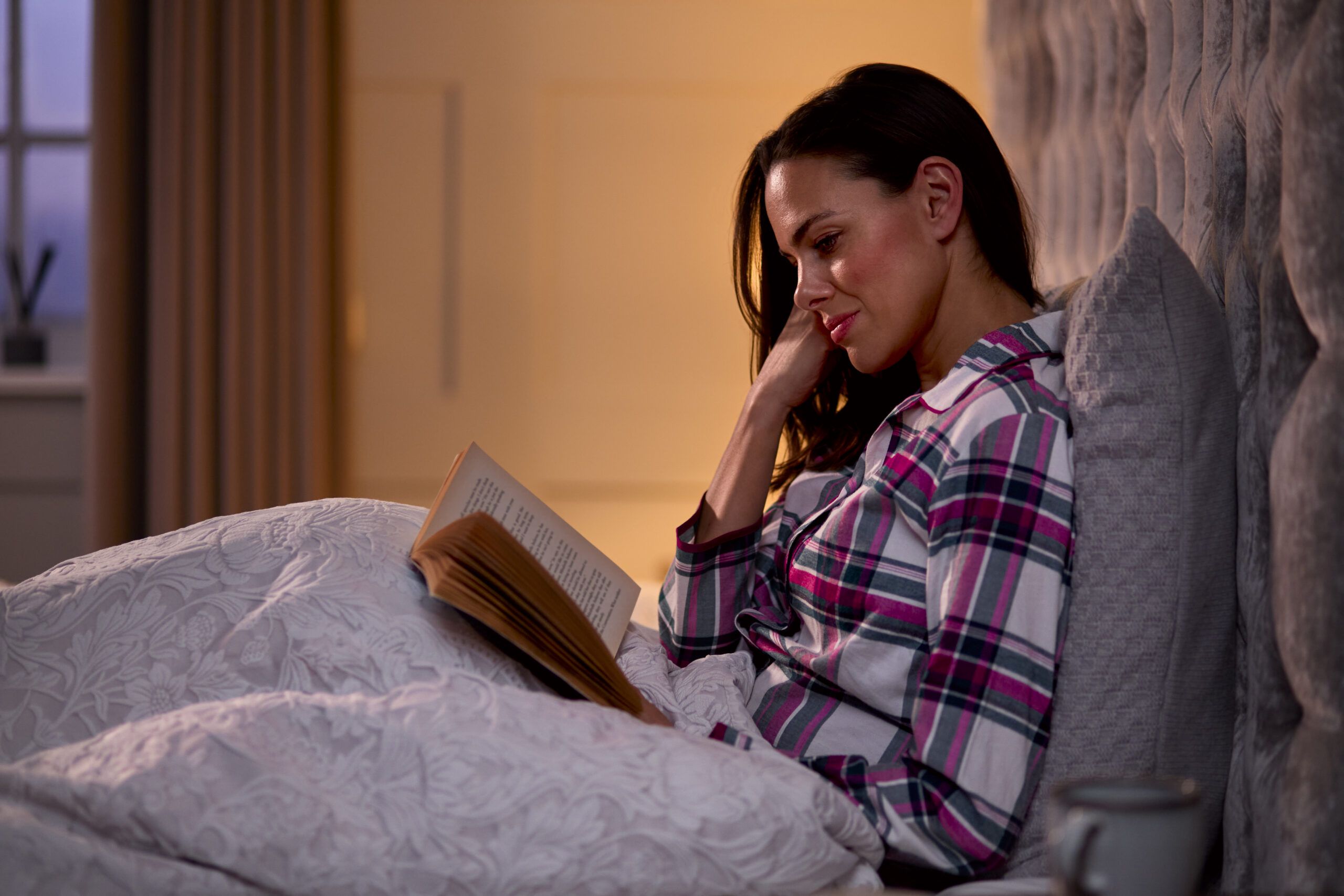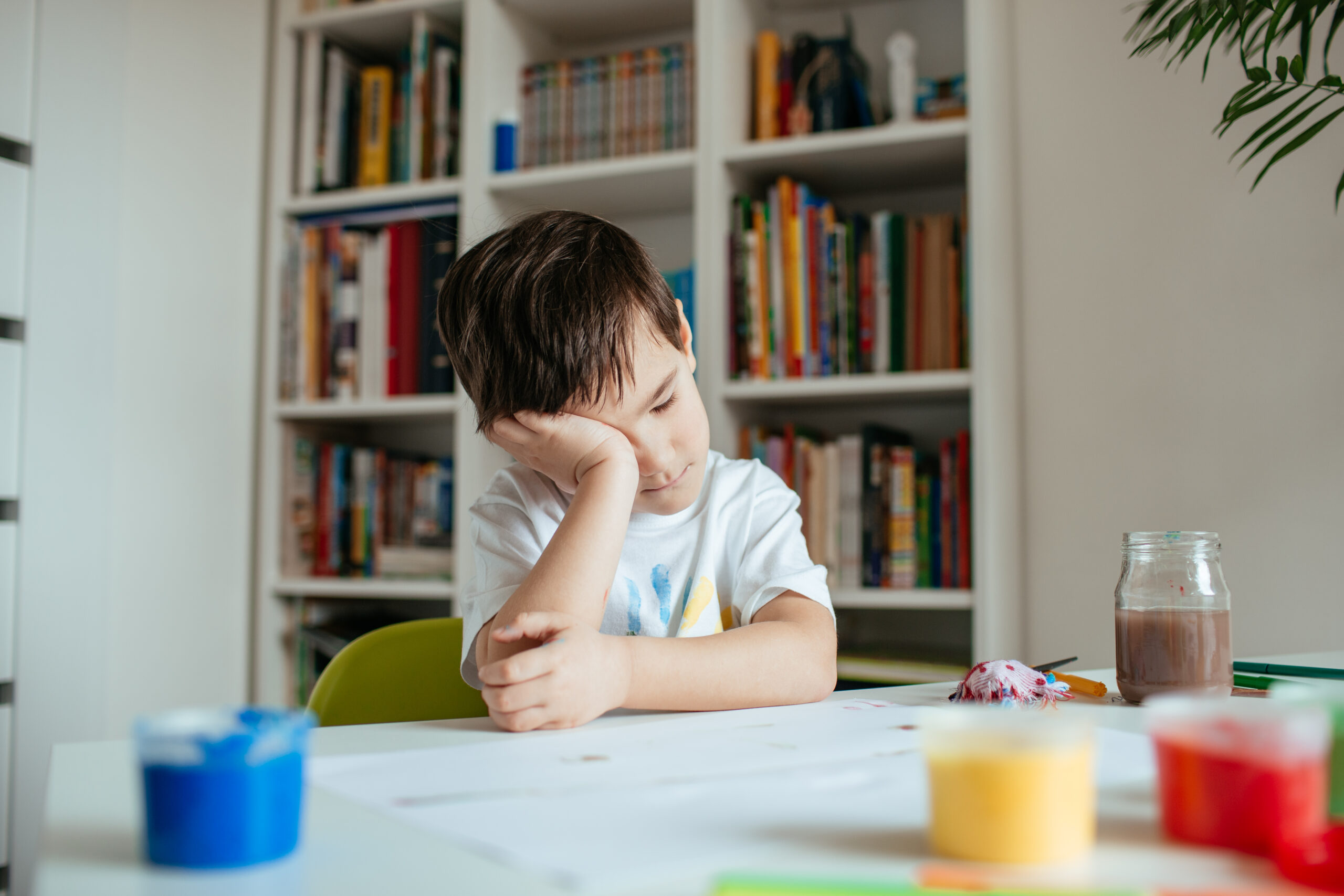Introduction
Sleep apnea is often regarded as a health problem that mainly affects adults. However, children can also be affected by this respiratory disorder, which is often under-diagnosed and misunderstood by the general public. According to Dr. Bruno Stach,pulmonologist, “Sleep apnea in children is still a little-known disorder among the general public and professionals alike.” (Alliance Apnées).
Left untreated, this disorder can have serious consequences for children's cognitive, physical and emotional development. Early detection of symptoms is crucial to avoid long-term complications, such as attention disorders, stunted growth or heart disease.
In this article, we'll explore what sleep apnea is in children, the signs that should raise a red flag, and the treatment options available to ensure our kids get restful sleep and a good quality of life.
What is sleep apnea in children?
Definition and types of sleep apnea
Sleep apnea is a disorder characterized by repeated interruptions in breathing during sleep. In children, there are two main types of apnea:
- Obstructive sleep apnea (OSA) : This is the most common form of apnea in children. It occurs when the upper airways (nose, throat) are partially or totally obstructed during sleep. This leads to breathing pauses or reduced airflow.
- Central sleep apnea : Less frequent, it occurs when the brain fails to send signals to the respiratory muscles to maintain regular breathing during sleep.
As the Dr. Annick Andrieuxexplains, pediatrician in Bordeaux:
“Children, too, can have partial (hypopnea) or total (apnea) obstruction of their upper airways (nose, throat) during sleep.”
Prevalence and age
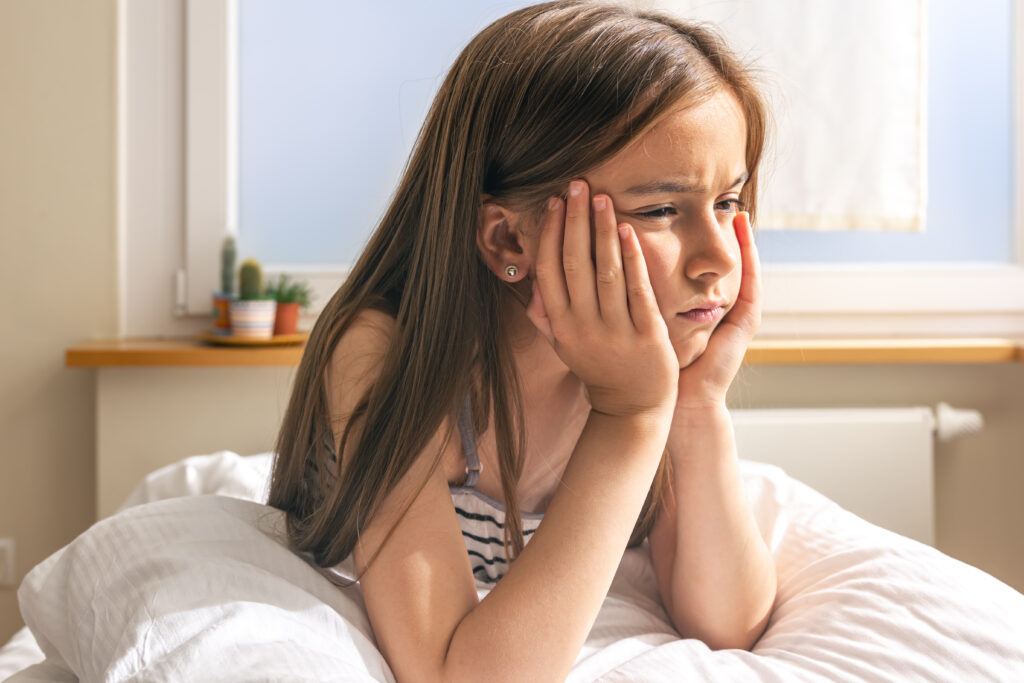
Obstructive sleep apnea affects a significant number of children. According to several studies, “Obstructive sleep apnea syndrome (OSAS) affects between 2% and 5% of children.” (JPRS).
Peak prevalence generally occurs in pre-school children, between 2 and 8 years. This period is particularly critical due to the development of tonsils and vegetations, which can obstruct the airways.
TheHôpital de Montréal pour Enfants specifies that “Obstructive sleep apnea occurs most frequently between the ages of two and eight.” (Hôpital de Montréal pour Enfants).
Sleep apnea symptoms in children
Nocturnal signs

Symptoms of sleep apnea in children occur mainly at night. Here are the most common signs to watch out for:
- Noisy, regular snoring Contrary to popular belief, snoring in children is not normal, and may indicate airway obstruction.
- Breathing pauses observed during sleep : Short interruptions in breathing followed by sudden resumptions.
- Mouth breathing during sleep : Constant mouth breathing can be a sign of nasal obstruction.
- Excessive sweating : Due to the extra effort required to breathe.
- Restless sleep : Frequent movements, position changes or multiple awakenings.
Daytime signs :

Daytime symptoms are often less obvious and can be attributed to other disorders. However, they may be indicative of sleep apnea:
- Chronic fatigue : Despite normal sleep duration, children wake up tired.
- Concentration problems : Attention and memory difficulties at school.
- Irritability and mood swings : The child may become irritable or show behavioural changes.
- Growth retardation : Disrupted sleep can affect the production of growth hormones.
- School problems : Decreased classroom performance, often associated with learning difficulties.
According to Dr. Bruno Stachpulmonologist in Valenciennes:
“Sleep apnea in children is still a little-known disorder among the general public and professionals alike.”
These signs should not be taken lightly, as early treatment is essential to avoid long-term complications.
Why is sleep apnea in children dangerous?
Sleep apnea in children is much more than a simple sleep disorder. If not diagnosed and treated in time, it can have serious consequences for children's physical, cognitive and emotional development.
Consequences for development

Growing children need quality sleep to develop properly. Repeated breathing interruptions during sleep can lead to :
- Impaired brain development : Fragmented sleep affects cognitive functions such as memory, learning and attention. According to a study published on Allodocteurs.fr, “Around 90% of children with sleep apnea go undiagnosed, which can lead to altered brain development, neuronal damage, stunted growth and chronic fatigue.” (Allodocteurs)
- Growth retardation : : Growth hormone production peaks during deep sleep. Poor sleep quality can therefore affect a child's physical growth.
Physical health risks

Untreated sleep apnea can also lead to long-term physical health complications:
- Hypertension : Repeated pauses in breathing can raise blood pressure and damage the cardiovascular system.
- Heart and lung problems : Constant effort to breathe can lead to cardiac hypertrophy and chronic respiratory problems.
- Attention Deficit and Hyperactivity Disorder (ADHD) : Chronic fatigue caused by poor sleep can worsen ADHD symptoms in children. Research shows a strong link between sleep apnea and behavioral problems.
These consequences can have a lasting impact on a child's quality of life and general well-being. So it's crucial to recognize the signs, and to consult a specialist quickly if in doubt.
Causes of sleep apnea in children
Sleep apnea in children can have several causes. Identifying the causes helps us to better understand the disorder and provide the right treatment.
Anatomical factors
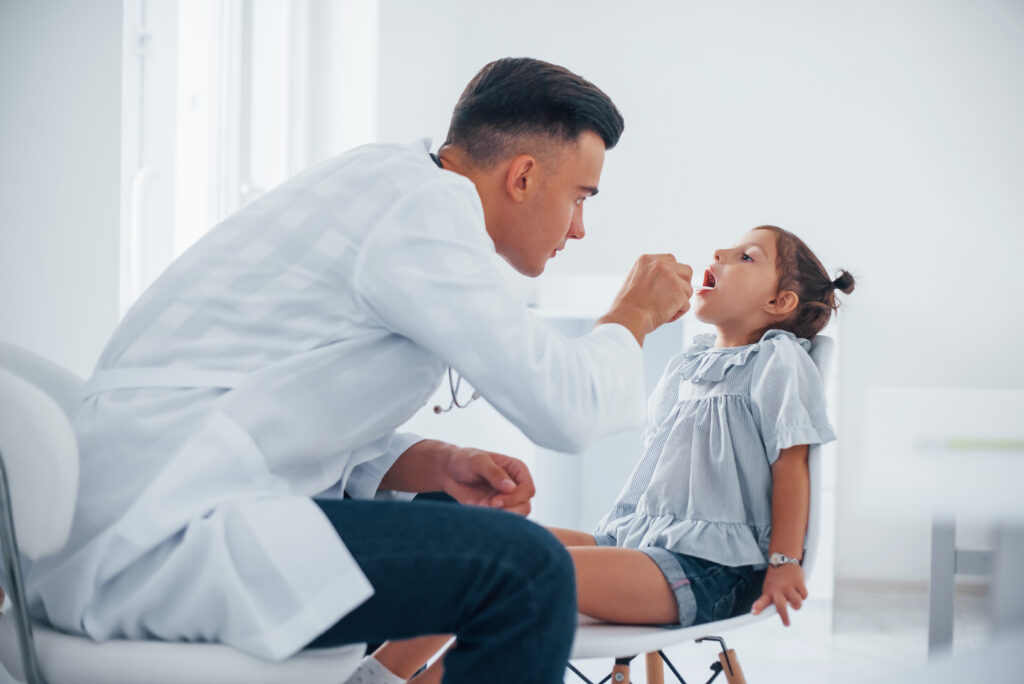
Physical abnormalities of the upper airway are a frequent cause of obstructive sleep apnea in children :
- Enlarged tonsils and vegetations : Enlarged tonsils and vegetations can obstruct airflow during sleep. This hypertrophy is particularly common in pre-school children.
- Craniofacial malformations A small jaw or narrow palate can also contribute to airway obstruction.
Overweight and obesity
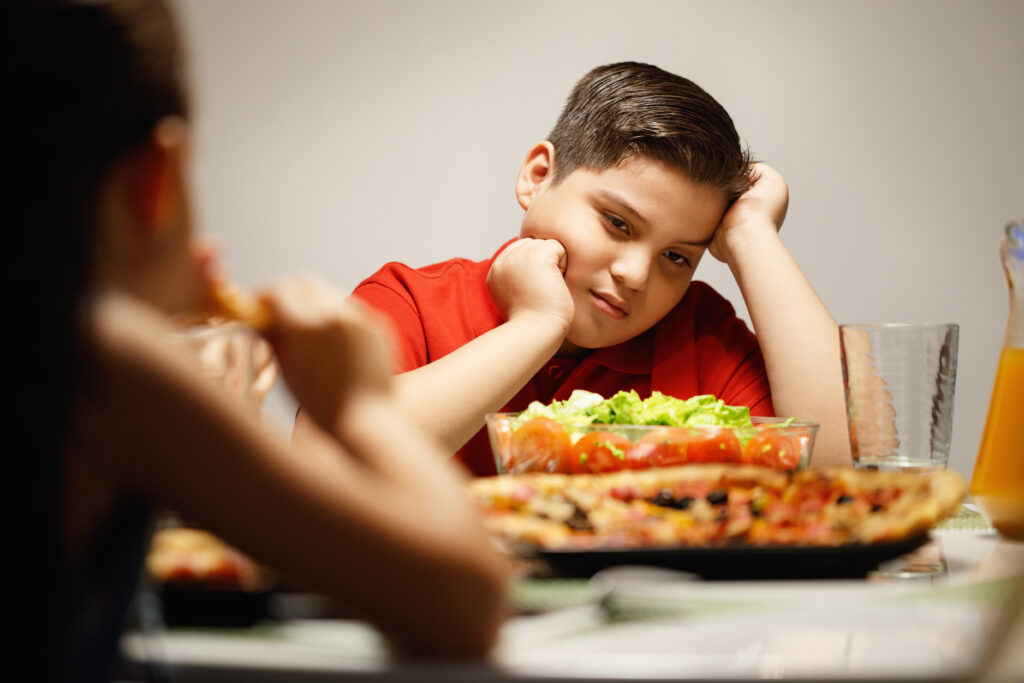
Overweight is a growing risk factor for sleep apnea in children. Excess fatty tissue around the neck can compress the airways and cause obstructions during sleep. A balanced diet and regular physical activity are essential to reduce this risk.
Lifestyle habits
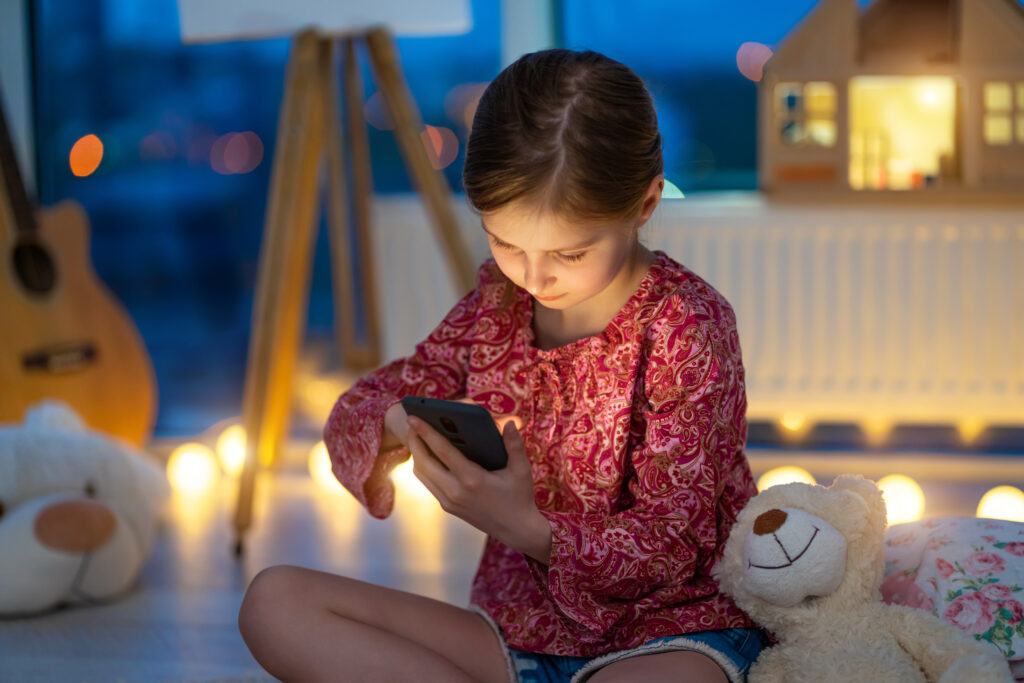
Certain lifestyle habits can contribute to the onset of sleep apnea:
- Excessive exposure to screens Screens (tablets, TVs, phones) can disrupt sleep cycles and aggravate apnea symptoms. Visit Dr. François-Marie Caron,former president of the AFPA, recommends : “A digital curfew with screens turned off one to two hours before bedtime is recommended to improve sleep quality in children.” (Le Monde)
- Allergies and nasal congestion Seasonal allergies or chronic rhinitis can lead to nasal obstruction, forcing the child to breathe through the mouth, increasing the risk of apnea.
Genetic factors
Certain genetic predispositions can make children more susceptible to developing sleep apnea. If family members suffer from this disorder, it's important to monitor symptoms in children.
Diagnosis of sleep apnea in children
Diagnosing sleep apnea in children is a crucial step in avoiding long-term complications. Prompt treatment can lead to appropriate therapy and improved quality of life for the child.
Consultation with specialists

When suggestive symptoms are identified (noisy snoring, pauses in breathing, daytime fatigue), it is recommended to consult :
- A pediatrician : He will carry out an initial clinical examination and refer to specialists if necessary.
- A pediatric respirologist or ENT specialist : These specialists can identify anatomical causes such as enlarged tonsils or vegetations.
Diagnostic tests
Tests to confirm the diagnosis include :
- Polysomnography : This reference examination records various parameters during sleep, such as respiratory movements, oxygen levels in the blood and brain activity. It can be performed in a sleep laboratory, or sometimes at home.
- Nocturnal oximetry A simpler test that measures oxygen levels in the blood overnight. It can give a first indication of the presence of apneas.
- Airway endoscopy To assess anatomical obstructions (tonsils, vegetations).
An accurate diagnosis can determine the severity of apnea and guide the choice of the most appropriate treatment.
Treatment options for sleep apnea in children
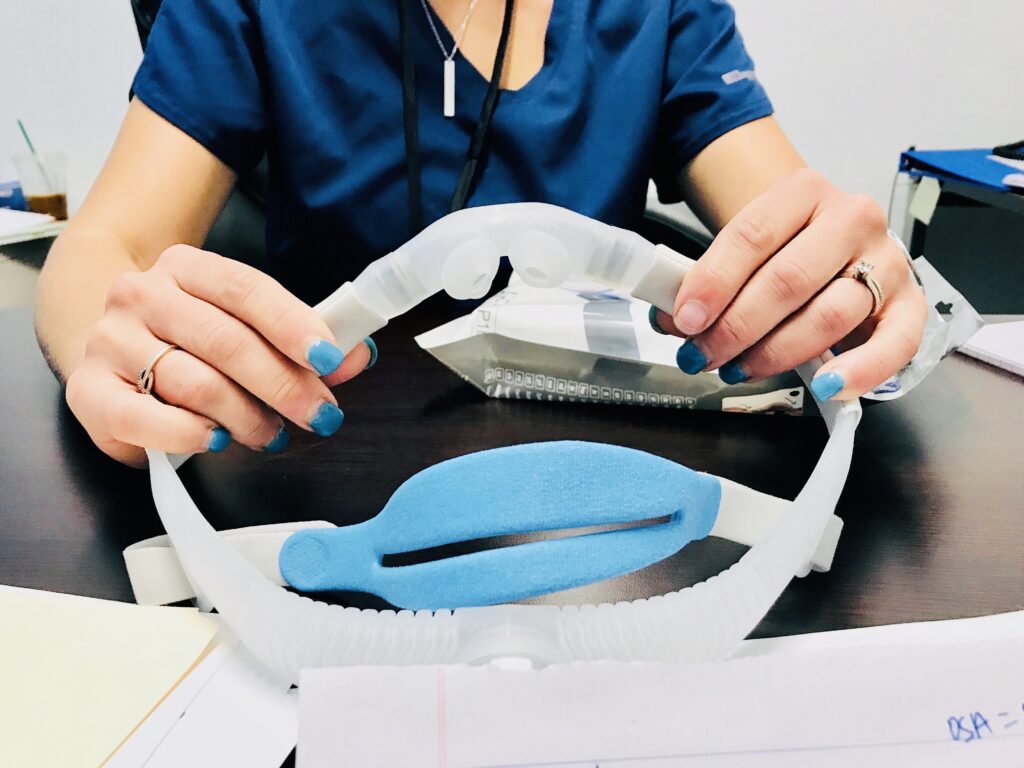
Treatment of sleep apnea in children depends on the underlying cause and severity of the disorder. Here are the main options available:
Medical and surgical treatments
- Removal of tonsils and vegetations (adeno-tonsillectomy)
This surgical procedure is the most common treatment for obstructive sleep apnea in children with enlarged tonsils or vegetations. It clears the upper airway and significantly improves sleep. - Continuous positive airway pressure (CPAP) devices
When surgery is not an option, or if apnea persists after surgery, a CPAP machine may be prescribed. This device keeps the airways open by delivering a constant flow of air through a mask worn during sleep. - Orthodontic treatment
In some cases, orthodontic devices can help widen the palate or adjust jaw position to reduce airway obstructions.
Lifestyle changes

- Weight management
For overweight children, supervised weight loss can reduce sleep apnea symptoms. A balanced diet and regular physical activity are essential. - Improved sleep hygiene
- Respect regular sleep schedules.
- Reducing exposure to screens at least two hours before bedtime, as recommended by the Dr. François-Marie Caron : “A digital curfew with screens turned off one to two hours before bedtime is recommended to improve sleep quality in children.” (Le Monde)
- Allergy treatment
In case of nasal congestion due to allergies, antihistamines or decongestants can be prescribed to improve night-time breathing.
As each child is unique, treatment must be tailored to his or her specific needs. A multidisciplinary approach involving pediatricians, pulmonologists and orthodontists is often necessary for optimal follow-up.
Conclusion
Sleep apnea in children is a serious health problem that remains largely under-diagnosed. Yet prompt and effective treatment can prevent serious complications such as developmental disorders, heart problems and difficulties at school. Recognition of symptoms by parents and healthcare professionals is therefore crucial to early intervention.
If you suspect your child suffers from sleep apnea, consult a specialist to carry out the necessary tests and set up the appropriate treatment. There are many treatment options, from surgery to lifestyle improvements.
👉 With Apnolab, benefit from personalized follow-up and innovative remote monitoring tools to monitor and manage your child's sleep disorders. Together, we can improve their sleep and quality of life. Discover Apnolab


